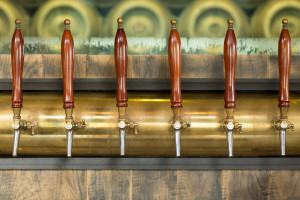 On the surface, draught drawing systems are not hard to understand. However, there are several factors which contribute to an excellent draft beer system. Besides quality and proper installation, the key is to maintain proper balance through the system. You don’t want too strong of a flow, too weak of a flow, too much foam, too little foam, etc. All of these things happen when the systems many moving components get out of balance. This series covers the basics of “beer balance” to ensure you have the best possible tap beer.
On the surface, draught drawing systems are not hard to understand. However, there are several factors which contribute to an excellent draft beer system. Besides quality and proper installation, the key is to maintain proper balance through the system. You don’t want too strong of a flow, too weak of a flow, too much foam, too little foam, etc. All of these things happen when the systems many moving components get out of balance. This series covers the basics of “beer balance” to ensure you have the best possible tap beer.
Four Key Measurements
There are four key components and corresponding measurements which are used to determine the overall balance in a beer system: beer temperature, applied pressure, resistance, and beer carbonation level. If these components are out of kilter, the quality, flow, and even the taste of the beer will be adversely affected.
Beer Temperature
First, you must know at what temperature beer you are starting. The important thing here is that you must know the actual temperature of the beer. Although you have a thermostat on the keg which will begin adjusting the temperature of the beer, the actual beer temperature won’t match your thermostat setting right away. In fact it usually takes a keg of beer many hours to reach a stable temperature equal to that of the cooler.
Applied Pressure
The easiest of the measurements to figure out, applied pressure is displayed by the gauge on the regulator. Almost universally, the measurement used is pounds-per-square-inch or more commonly as “PSI.” Applied pressure is essentially the force that gets the beer moving as it tries to overcome resistance and restriction.
Beer Resistance and Restriction
A vital part of developing a reliable, efficient, and effective clean beer system is determining resistance. Resistance comes from factors like the friction from the beer line and changes in elevation between the keg and the tap. Resistance is broken into two types: static and dynamic.
Static Resistance: this comes from the force of gravity. Think of a U-tube filled with water. You can blow into one end to force the water out the other end, but of course the weight of resting water (hydrostatic) will push back. For each foot of elevation, 0.43 pounds of hydrostatic pressure is added to the resistance the gas pressure must overcome.
Dynamic Resistance: this arises from the beer line itself, and in a small part to other hardware components. Dispense towers are a large culprit with variable levels of resistance. Check with the manufacturer to determine their level of resistance. Similarly, each type of beer line has a different level of resistance (or restriction): again, check with the manufacturer for specifics.
Carbonation Level
The amount of carbonation in a beer is measured by a unit known as “volumes” of CO2, typical amounts run from 2.2 to 2.8 volumes of CO2 in a keg of beer, however these guidelines are not always true of specialty beers. The dynamics of carbonation fluctuate as the temperature and PSI fluctuate.
In part II, we will cover how to keep your whole system balanced as the four major components work together. If you need more help understanding draft beer line systems, please contact us at Clean Beer, in Milford, MA. We can meet all your beer line needs, from installation to cleaning and maintenance. In addition to our services, we sell new and used beer line equipment, for your home or bar. Clean Beer is the home of the clean beer line experts, contact us about your home or commercial tap needs.
